by Evin Oneale, Regional Communications Manager and Martin Koenig, Natural Resource Program Coordinator
They have been around since the days of the dinosaurs, but now struggle for survival. They can live to be well over 50 years old. They have skeletons made, not of bone, but rather cartilage. They breed infrequently and only after they’ve reached 15 or more years of age. They are a much sought after game fish and an Idaho icon. They are white sturgeon.
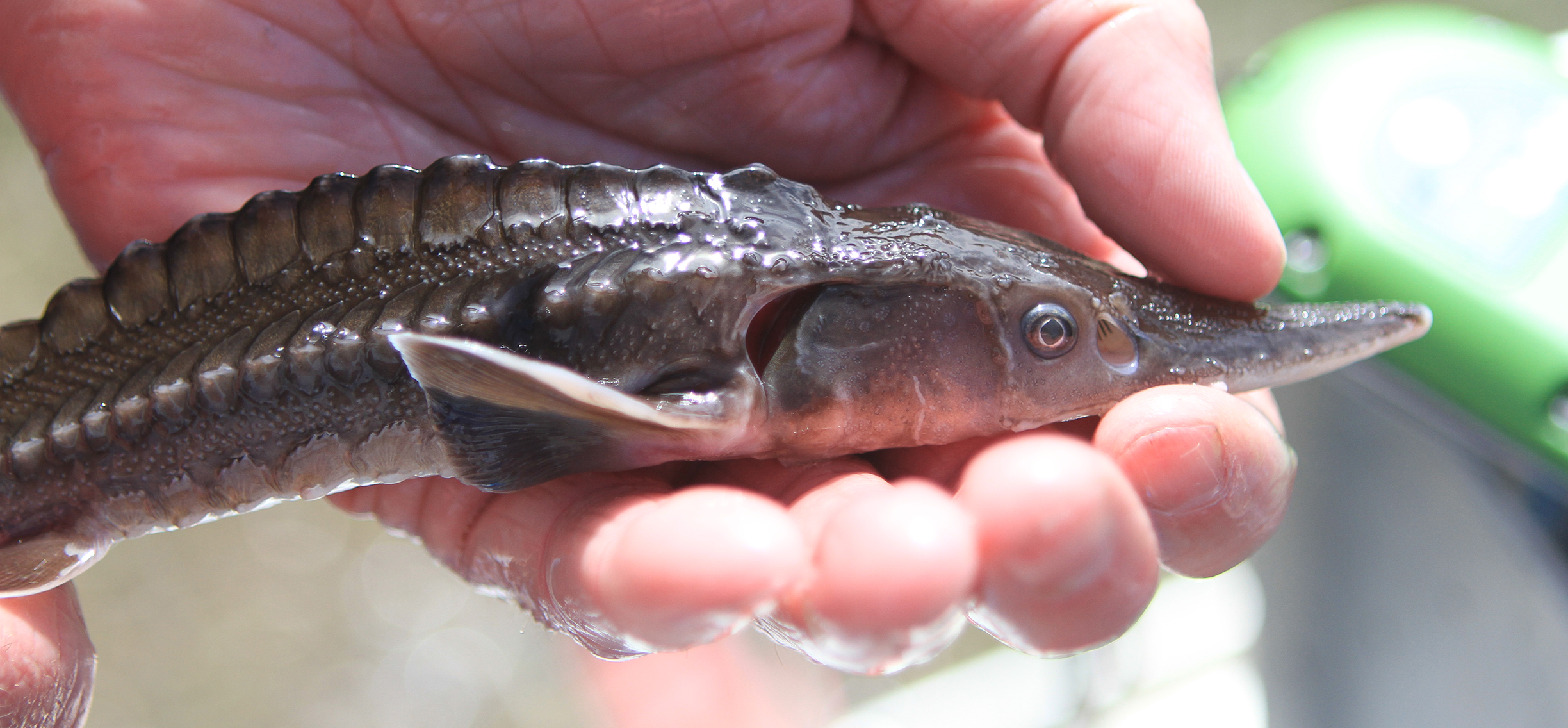
Idaho Fish and Game, the College of Southern Idaho, and Idaho Power Company are working together to strengthen white sturgeon populations in the middle Snake River. Stocking hatchery-reared sturgeon – the progeny of wild parents – is one part of a much bigger plan to help conserve sturgeon populations and maintain fishing opportunities for these long-lived river giants.
The Snake River’s white sturgeon population received a boost recently with the stocking of more than 1,800, year-old white sturgeon. Each spring, Idaho Power fisheries biologist Phil Bates and the team from College of Southern Idaho release hundreds of baby sturgeon in 15 sections throughout the Snake River. These sturgeon are stocked near Twin Falls, and from CJ Strike to Brownlee reservoirs, to help boost populations where sturgeon no longer reproduce naturally. No sturgeon are stocked in the Bliss Dam to CJ Strike section, to help keep this population as wild as possible. Each young sturgeon’s journey to stocking day is quite a process.
White sturgeon are found throughout the Pacific Northwest, all the way to Alaska. In Idaho, they are present throughout the Snake River up to Shoshone Falls, and in the lower Salmon River. North Idaho’s Kootenai River also has a distinct white sturgeon population that is listed as endangered under the Endangered Species Act. Despite their wide distribution in Idaho, sturgeon face significant survival challenges from a history of overfishing, together with extensive changes to their river habitats from dams, water diversion and pollution. Today, sturgeon fishing is only allowed on the Snake and Lower Salmon rivers, and all Idaho sturgeon fishing is catch-and-release only.
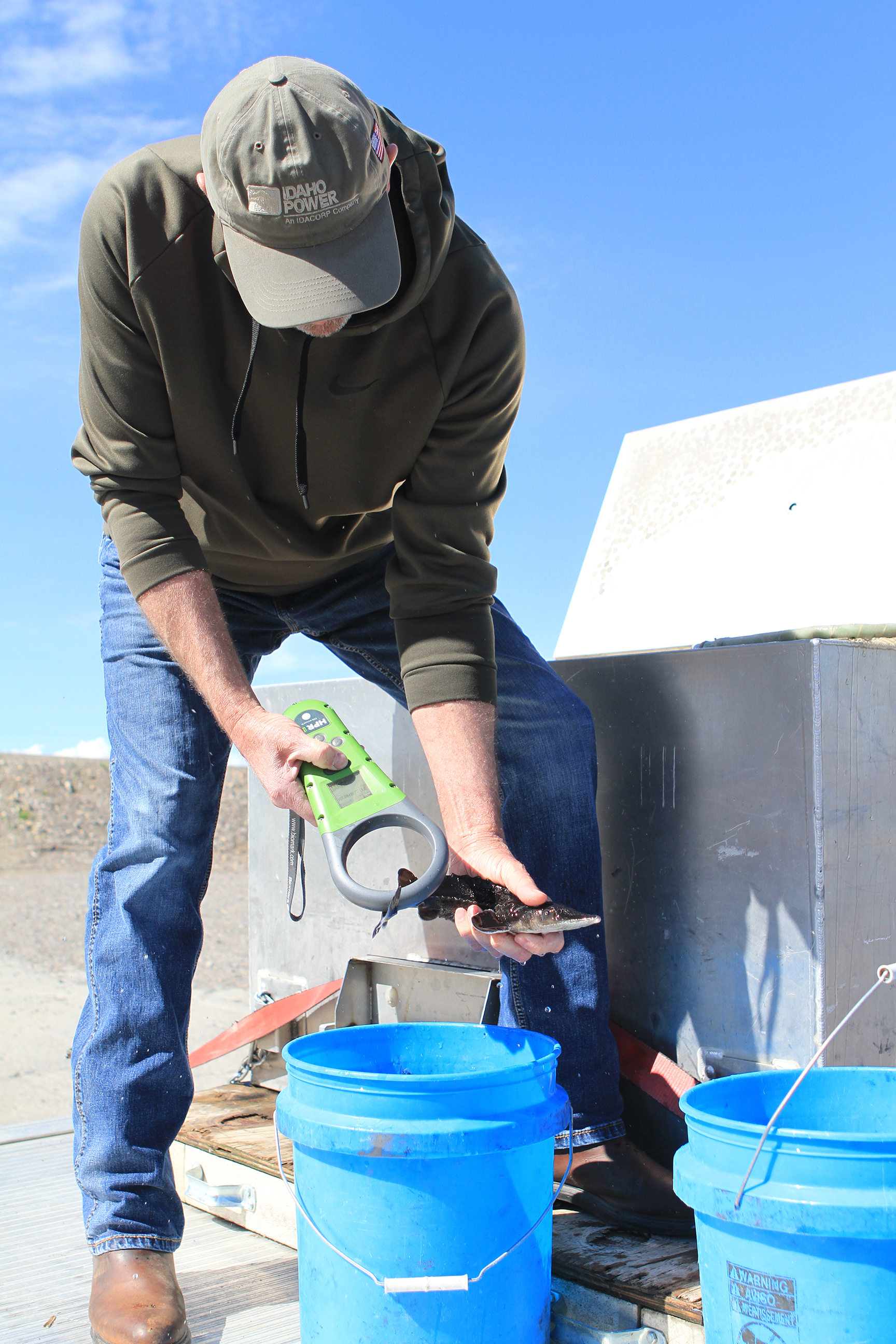
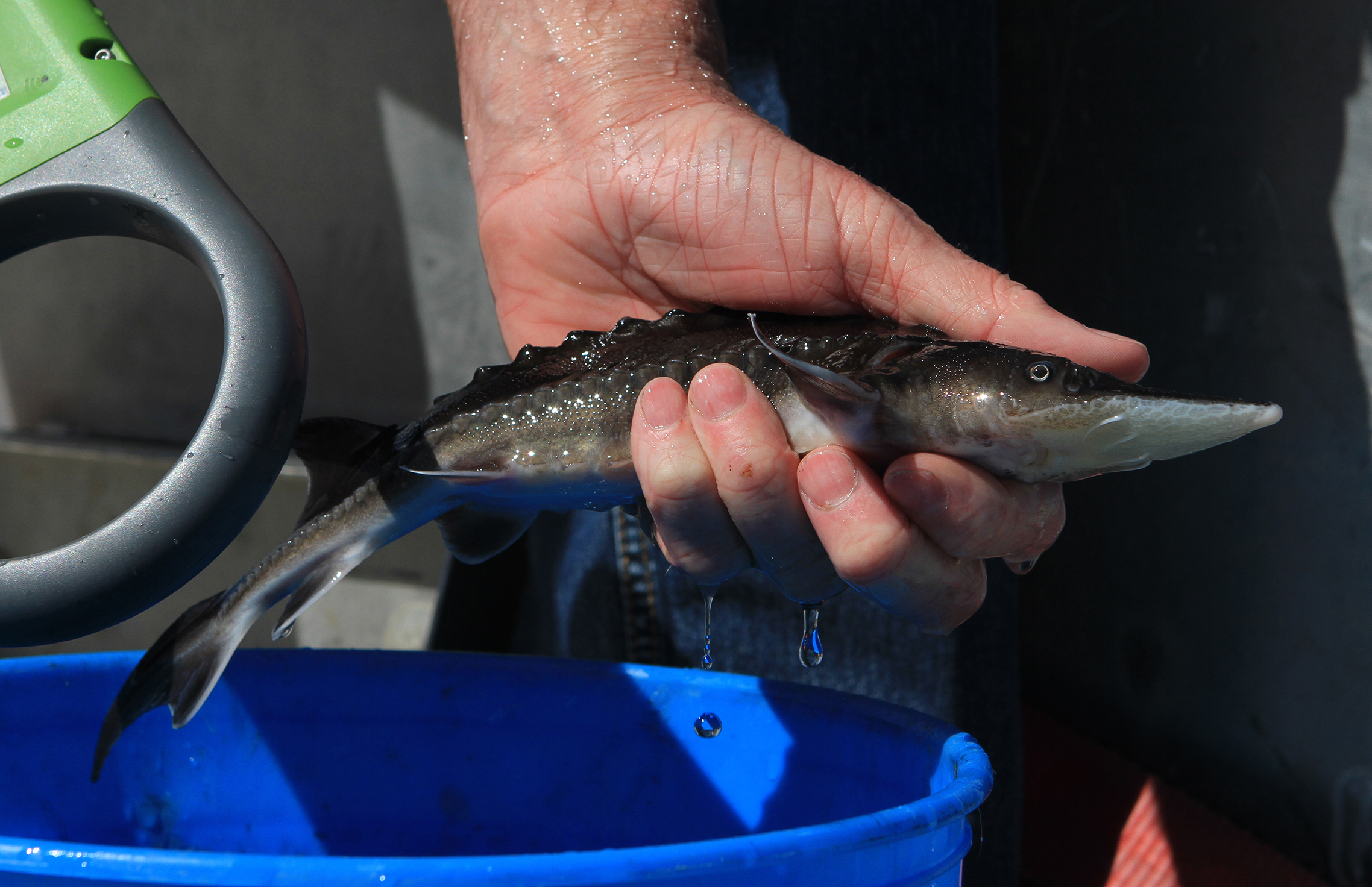
A Conservation Program
In the early days of Idaho’s white sturgeon conservation hatchery program, mature adult sturgeon were captured in February or March, and transported to the College of Southern Idaho’s hatchery near Twin Falls. After a few more months, these fish were spawned then returned to the river reach where they were captured months earlier.
Learn more about the Snake River white sturgeon spawning program here
This model presented more than a few problems. Removing adult fish from the river could result in death to one or more of these fish, either during the capture process, during transport, or while in captivity, setting back the spawning program not to mention the direct loss of a valuable spawning adult fish. With only two to three adults of either sex captured at a time, the limited number of families produced failed to reflect the genetic diversity of the fish found in the river.
After a few years of experimentation, Idaho Power biologists perfected a technique which addresses both issues. Using fine mesh nets, they remove drifting sturgeon eggs and sturgeon larvae directly from the river in the reach between Bliss Dam and CJ Strike Reservoir, the only stretch of river above Brownlee Reservoir that still has the right conditions needed for sturgeon to successfully spawn. These fertilized eggs and larvae are then transported to CSI’s hatchery where the young fish spend the next year feeding and growing to about 12 inches in length. This process puts no adult fish at risk and the eggs collected represent a much more diverse group of spawning adult fish, a much better long-term conservation strategy reflecting natural spawning.
In the days leading up to release, each baby sturgeon is individually marked with a PIT (Passive Integrated Transponder) tag. These tags will identify individual sturgeon for many years to come as biologists assess Middle Snake River sturgeon health and survival.
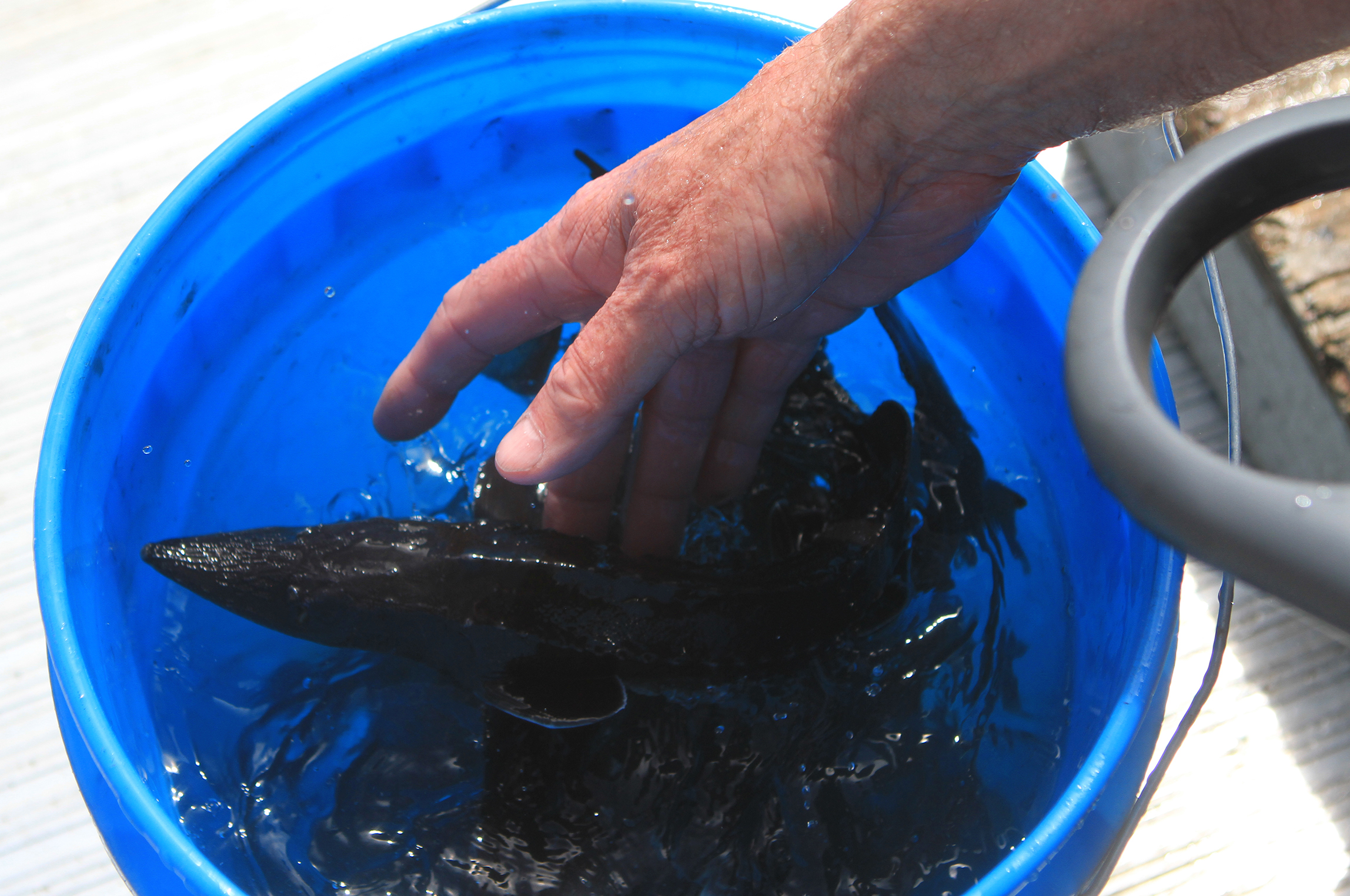
Stocking Day
The hatchery truck veers off Main Street and slows to a stop adjacent to the Grand View boat ramp. Bates and his fisheries technicians, Jack Wu and Charlie Kerrick, begin the methodical process of releasing baby white sturgeon back into the Snake River, the final step in a 16-month effort. Each fish is netted from the holding tank, quickly scanned to record its unique tag number, and then placed in a five-gallon bucket of water. Five or six fish later, one of technicians hefts the bucket and takes a few steps to the river’s edge. The bucket’s contents are slowly poured into the river and the young sturgeon spill into their native waters for the first time.
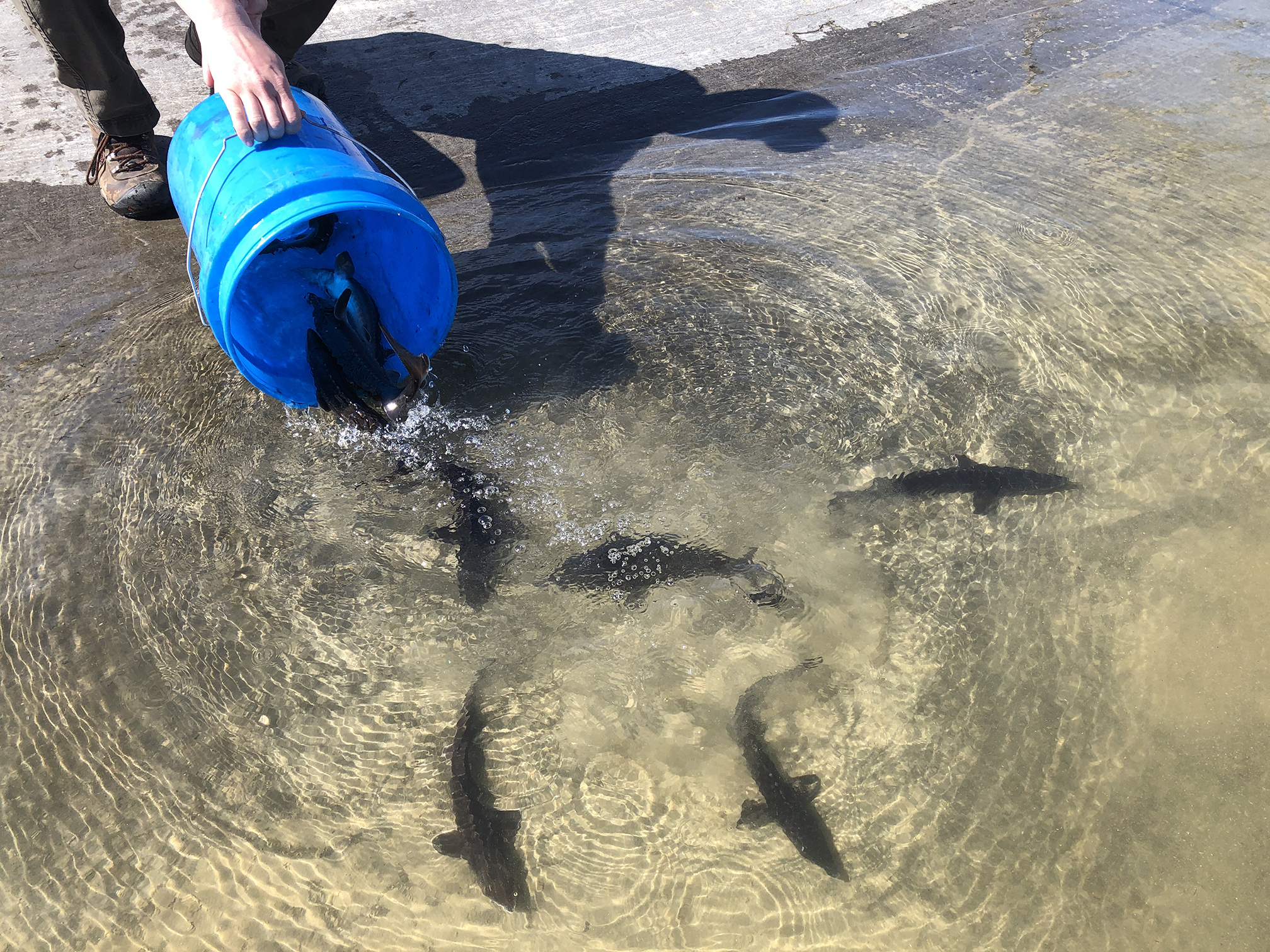
The process is repeated until 50 fish have been released. Soon, the shallow water covering the boat ramp is alive with baby sturgeon, varying in size from eight to 14 inches, a reflection of their various genetic makeups. Some enter the water and immediately move off, into the deep. Others swim slowly in random patterns, while a few remain almost motionless, acclimating to their new surroundings. Yet just minutes after stocking is complete, the shallows are empty. The living dinosaurs have vanished, off to seek their fate and hopefully, to play an integral role in the white sturgeon’s survival.

